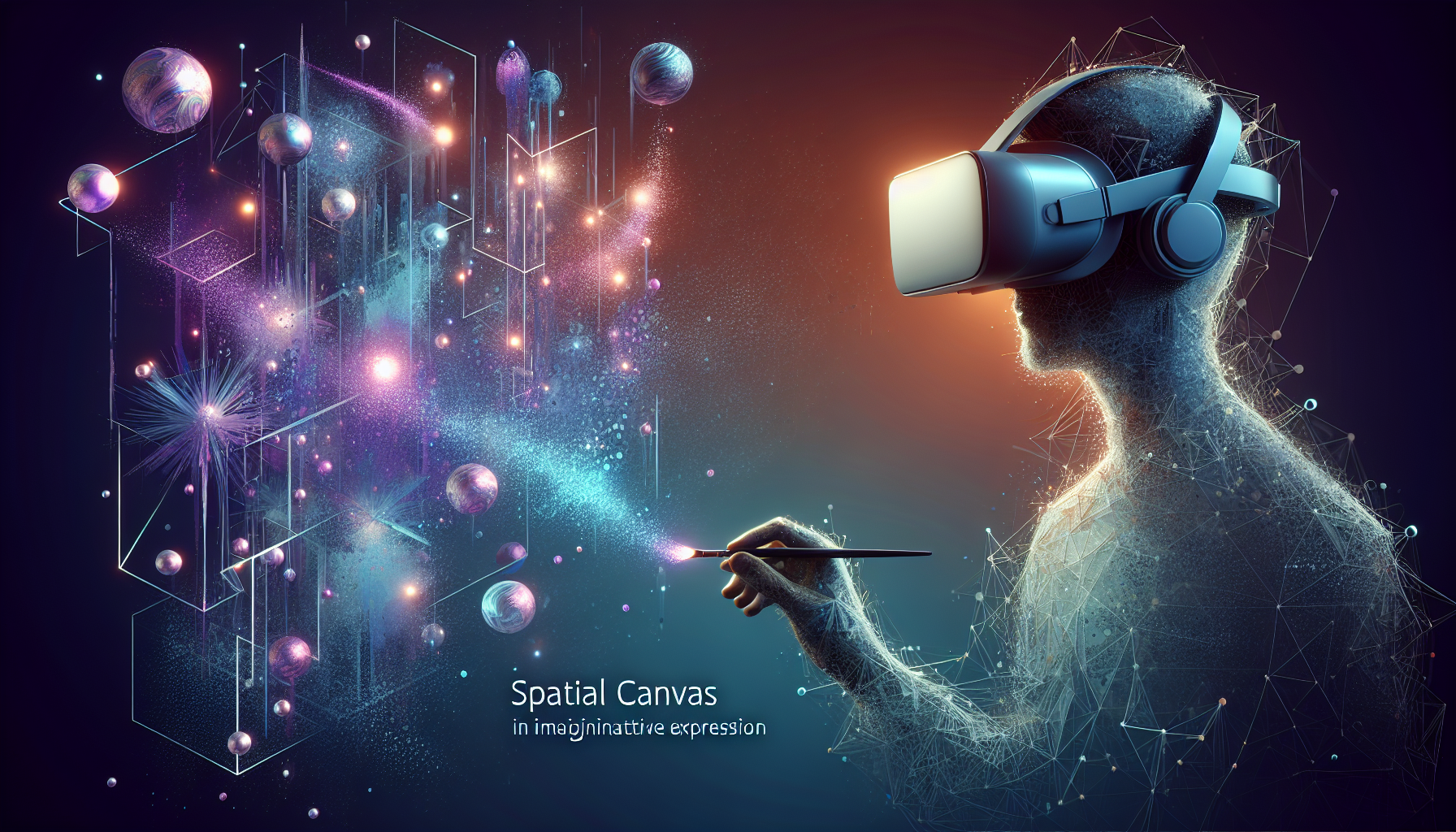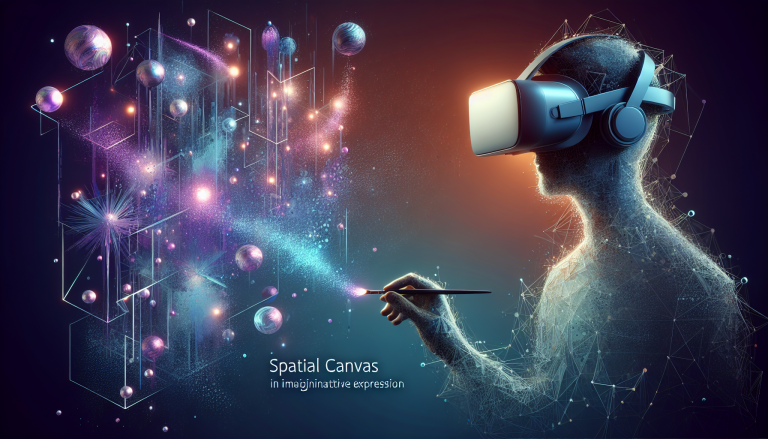
Spatial Canvas: The iOS VR App Revolutionizing Creative Expression in Virtual Reality
The Dawn of Spatial Canvas: A Revolutionary iOS VR App Transforming Creativity
Virtual reality (VR) continues to redefine the boundaries of human interaction with digital content, and the latest breakthrough comes in the form of an innovative iOS app called *Spatial Canvas*. Launched just weeks ago, this app is rapidly gaining traction as a tool that merges artistic expression with immersive technology, ushering in a new era for VR enthusiasts and creators alike.
As someone deeply passionate about both VR and Apple’s iOS ecosystem, I was thrilled to dive into Spatial Canvas and explore how this fresh development is shaping the future of virtual reality on mobile platforms. Today, I’m going to take you through the remarkable features of this app, why it’s a game-changer in the VR space, and how it signals important shifts in how we engage with creativity in virtual environments.
What Is Spatial Canvas?
Spatial Canvas is an iOS-exclusive virtual reality application designed for iPhones and iPads that transforms traditional artistic endeavors into full 3D immersive experiences. Unlike conventional mobile drawing or painting apps, Spatial Canvas leverages ARKit and Apple’s powerful hardware to allow users to create in a boundless 3D space around them. Imagine stepping inside a room-sized digital studio, where your brush strokes float freely in midair — that’s the essence of this novel app.
Developed by a team of cutting-edge VR creators and seasoned iOS developers, Spatial Canvas was designed to push the envelope of what mobile VR can do without requiring bulky headsets or expensive gear. Instead, the app uses the device’s camera and motion sensors to create mixed-reality experiences viewable on the phone screen or through AR glasses, blending virtual elements seamlessly with the user’s real-world environment.
Why Spatial Canvas Stands Out in the VR Landscape
Virtual reality apps on iOS have mostly focused on gaming, 360-degree video viewers, and simple educational experiences. Spatial Canvas disrupts this trend by placing creativity front and center, infusing the VR space with artistic freedom that feels both intuitive and expansive.
Here’s why Spatial Canvas is so significant:
1. **True 3D Artistic Freedom:** Traditional digital art apps restrict you to flat screens, but Spatial Canvas allows you to paint, sculpt, and arrange objects in full three-dimensional space. You can walk around your artwork, placed like sculptures in your living room, to inspect every detail.
2. **Accessible Hardware Requirements:** Unlike many VR platforms that rely on expensive, standalone headsets, Spatial Canvas runs on everyday iOS devices. With just an iPhone or iPad, users can create and experience immersive virtual artwork anywhere — a major democratization of VR art creation.
3. **Seamless AR and VR Integration:** The app offers dual modes. In AR mode, you can superimpose your creative work onto your physical surroundings, making it easy to share and collaborate. In VR mode, a connected headset or external display transforms the experience into fully immersive virtual reality.
4. **Collaborative Creativity:** Recognizing the social dimension of art, Spatial Canvas includes features for multi-user sessions. Multiple creators can join the same virtual space remotely, co-creating and editing projects in real-time, an exciting feature especially relevant in today’s world of remote collaboration.
How Spatial Canvas Leverages iOS Technologies
Spatial Canvas is a prime example of how the evolution of iOS hardware and software is enabling new VR possibilities. Apple’s commitment to AR and VR is evident in the app’s smooth performance and cutting-edge features, which rely heavily on:
– **ARKit:** Spatial Canvas utilizes Apple’s ARKit framework to accurately map physical spaces and incorporate the user’s environment into the virtual experience. This technology enables a dynamic blending of real and virtual elements that’s both realistic and responsive.

– **LiDAR Scanner:** Available on the newer iPad Pro models and iPhone 12 Pro and later, the LiDAR scanner enhances depth perception, allowing the app to create precise spatial mapping. This makes virtual brush strokes and sculptings adhere crisply to physical room surfaces, adding tactile realism.
– **Metal Graphics API:** The high-fidelity rendering of spatial models and real-time effects in the app is powered by Apple’s Metal API, which delivers optimized graphics processing for fluid interactions without sacrificing battery life or speed.
– **Haptic Feedback and Motion Sensors:** Using built-in motion sensors and haptic feedback, Spatial Canvas provides an immersive sensory experience that mimics the physical sensation of creating art, which makes a huge difference in user engagement.
Implications for the Future of VR on iOS
Spatial Canvas is not just an isolated tech marvel; it foreshadows broader trends in virtual reality and mobile technology:
– **Shift Toward Creation, Not Just Consumption:** Many VR apps focus on gamified experiences or passive content consumption. Spatial Canvas flips the script by empowering users as creators. This creative empowerment could pave the way for more artistic and design-driven VR apps on iOS.
– **Mobile-First VR Experiences:** By demonstrating that powerful VR experiences don’t require heavy hardware, Spatial Canvas spotlights the growing viability of mobile VR as a mainstream platform. It suggests future VR developments will increasingly cater to users on smartphones and tablets.
– **Blurring the Lines Between AR and VR:** Spatial Canvas’s dual-mode approach aligns with the industry’s trajectory of merging augmented reality and virtual reality into a seamless extended reality (XR) continuum. This hybridization offers richer possibilities for interactive content across various contexts.
– **Social VR on an iOS Ecosystem:** The app’s multi-user collaboration protocols signal an emerging focus on social VR apps optimized for mobile usage and connectivity. The pandemic pushed remote creativity, and Spatial Canvas taps into that momentum with compelling collaborative features.
Isaac’s Take on Spatial Canvas
From a VR enthusiast’s perspective, Spatial Canvas is a breath of fresh air. It brilliantly showcases how the iOS ecosystem can serve as a fertile ground for VR innovation without the barriers typically faced by standalone VR headsets.
The app’s intuitive user interface, combined with the tactile nuances enabled by iOS hardware, creates an inviting atmosphere for both VR veterans and newcomers. What excites me most is its potential to inspire users outside traditional art circles — whether educators, architects, or casual creators — to explore virtual space as a canvas.
To quote the lead developer, Maria Chen, “Our goal was to make virtual reality feel natural, approachable, and limitless for creative expression. By harnessing iOS technology, we believe we’ve opened a new chapter for immersive art.”
Getting Started with Spatial Canvas
If you own a compatible iPhone or iPad running the latest iOS version, diving into Spatial Canvas is straightforward:
1. Download the app from the Apple App Store — it’s optimized for iOS 16 and later.
2. Calibrate your device to scan your environment using ARKit functionalities.
3. Start with simple strokes or use sculpting tools to build shapes in 3D space.
4. Experiment with colors, textures, and layering effects.
5. Invite friends or colleagues into your virtual studio to co-create.
6. Share snapshots or fully immersive sessions with your social circle or via cloud exports.
The app’s developer community is already buzzing with tutorials, templates, and add-on resources, making it an exciting space to grow.
Conclusion: A New Horizon for Virtual Reality Art on iOS
Spatial Canvas’s emergence soon after the latest iOS updates underscores how mobile platforms and virtual reality are converging in fascinating ways. This innovative app isn’t merely a tool; it’s a glimpse into a future where creativity knows no physical limits, and VR serves as the ultimate extension of our imagination.
For the burgeoning community of VR artists, tech enthusiasts, and casual creators on iOS, Spatial Canvas is more than an app — it’s a launchpad into immersive artistry. If you’ve ever wanted to paint with nothing but the air around you or sculpt digital masterpieces that inhabit your living room, now’s the time to give this app a whirl.
The world of virtual reality is evolving rapidly, and with developments like Spatial Canvas, iOS users are poised to be at the forefront of this exciting revolution. Whether you’re a seasoned VR devotee or simply curious about the next big leap in technology, keep your eyes on what Spatial Canvas and similar innovations will unleash in the years ahead.
